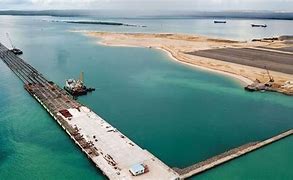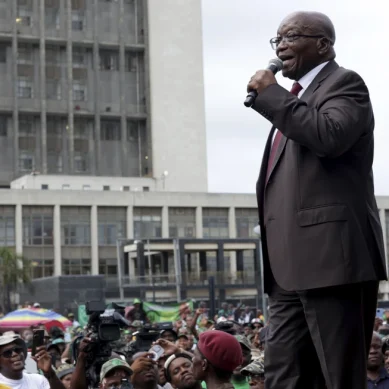
Kenya’s flagship – and by extension Africa’s – the Lamu Port-Southern Sudan-Ethiopia Transport (Lapsset) billed as the largest ever infrastructure development in Africa, has increasingly come under serious threats from oil-exporting countries in the Middle East and northern Africa, with apprehension on the rise in east and southern Africa that it will inflect regional business volumes in Kenya’s favour.
Regionally, some landlocked countries in eastern Africa – save for Ethiopia and Djibouti – are eyeing alternative seaport development to access the Indian Ocean, which if successful would reduce the hinterland that Lapsset is designed to tap into.
However, as Nairobi gloats over the giant project that was mooted in 2012 to open up what historically is referred to as the ‘Northern Frontier’, it has spanned out and brought on-board Kenya’s landlocked neighbours in the west and north that will connect to the Indian Ocean upon completion. The expansion of Lapsset to a regional project is embedded with security, economic and social risks that Kenya is said to be grappling with and the risks, experts say, threaten to limit it to the Lamu Seaport.
Already Sudan, which has for the past two years been soaked in bloodbath and internal strife following the ouster of former strongman Omar el Bashir with the support of United Arab Emirates, Egypt, Yemen and Oman are reportedly clandestinely waging resistance to the project is estimated will cost up to Ksh1 trillion ($766.3 million) to connect the East African coast to South Sudan, Ethiopia, Uganda, Central African Republic, the Democratic Republic of Congo (DRC) and Cameroon, among others.
Intervieewed, serving and former top government officials shied away from openly discussing the specific countries that are opposed to the project, but admitted that nearly all countries on the eastern and southern Africa coasts, were too apprehensive of the economic threats the Lamu port poses “as it is a natural port and does not need dredging for more depth like Tanzania’s Dar es Salaam port, Maputo and Port Beira in Mozambique or Durban in South Africa.”
Critics, though, explain the reluctance of government functionaries to delve into the slow pace of implementation as a scapegoating tactic as Kenya mulls deference of the project that has elicited regional hostility. A case in point is Sudan, which stands to lose about $3 million per day in revenue if South Sudan chose to export its oil via Lamu Port. South Sudan produces over 150,000 barrels of crude oil per day for which Sudan levies $5 per barrel that moves through the Port Sudan to the world market.
Prof Githu Muigai, who, as attorney-general at the time was involved in drafting of legal instruments for the project was economical in his response to the Tell inquiries.
“It is a matter that I would not want to comment on at the moment. It is complicated. The director-general who spearheaded the project from conception is in a better position to respond to your questions,” said Prof Muigai, when asked about the legal instruments that birthed Kenya, South Sudan and Ethiopia collaboration.
Not coincidentally, there has been increased terror attacks along the Lapsset corridor as al-Qaeda-supported al Shabaab Somali terrorist outfit has over the past few years turned the Boni Forest in Lamu, Garissa – which is to be upgraded to a city – Mandera, Wajir and Moyale into its terrorism theatres. Further north of Garissa, the stretch between Isiolo town, which in the Lapsset masterplan is to become a resort city, and Lodwar in the northwest, are playgrounds for heavily armed cattle-rustlers.
Since being appointed Cabinet Secretary for Internal Security, Prof Kithure Kindiki, has spent more than a year chasing ghosts in the Lapsset Corridor, with very little nothing to write home about. The government has been unable to explain what appears to be unstinted arms inflow from neighbouring countries into the project corridor. Security intelligence in the region has on many occasions seemed baffled amid allegations of complicity.
Security expert and former American Marine Andrew Frankline points out that insecurity rise in northern is not coincidental and is traceable in Kenya and the Middle East. It is a security concern that was alluded by retired President Uhuru Kenyatta following a surge of terrorist attacks along the Kenyan coast in January 2022.
“Al Shabaab controls vast swathes of northeastern Kenya, where they are trying to establish a caliphate. In parts of Somalia, they enforce law and order. They are no longer fighting to get rid the Kenya Defence Force (KDF) from Somalia. They don’t have the capacity to fight KDF or Uganda military in conventional war,” says Frankline.
When Tell reached former Lapsset Director-General Silvester Kasuku, he revealed that project may have run into headwinds following strong resistance in the Horn of Africa and Middle East as its political and economic implications had drawn in world superpowers – the United States, China and Russia. However, Kasuku shied away from the politics around it, saying only government functionaries can shade light on the matter. Kasuku admits that the vast economic potential of Lapsset has elicited massive interest in Horn of Africa, Middle East, Asia, Europe and the United States.
Former President Mwai Kibaki tapped Kasuku from the United Nations Economic Commission for Africa (UNECA), where he was senior consultant on infrastructure development at the African Union headquarters in Adds Ababa, Ethiopia. He is now a senior lecturer in the Arts and Design Department of the University of Nairobi.
“It has fared better than similar projects in Middle East, Asia and Europe. Lapsset began being exposed to people who even developed resistance to it at global stage. It won an award for Africa during an international expo in South Africa for Investor when they were looking at Investor projects in Africa. It beat the Ethiopia railways and the Tanzanian seaport, among others. They explained why it was the best. It created some kind of awakening… South Africa has tried to do a nine-berth dugout port because they do not a have a natural waterfront with depth equivalent to that of Lamu. But they couldn’t because the costs were too high. They abandoned it,” says Kasuku.
The Lapsset Corridor Programme is part of the Kenya Vision 2030 – a national long-term infrastructure development policy aimed at transforming the East African biggest economy into a newly industrialising, middle-income country providing a high quality of life to all its citizens by 2030 in a clean and secure environment.
At its conception, it was estimated it would cost roughly Ksh14 billion ($107.3 million). However the upgrading of Lapsset to African Union’s 10 priority pillar projects that connects the East African coast to West Africa farthest point has elevated it to one of the largest infrastructure projects in the world.
“Any attacks in Lamu are essentially Al-Shabaab. When people power or projects in Kenya or the political class talk about insecurity in Kenya, they seem very eager to always assign blame to other countries. The question then becomes, ‘Who is sponsoring it’? If for example if we focus on Al Shabaab, it is well known that Al Shabaab does take money to kill people. Let’s go back to the Mpeketoni massacres (in 2014 and 2022) when President Kenyatta said it (massacre) was not (by) Al Shabaab, but politicians and political interests (behind the bloodbath). The question then becomes, “Would Al Shabaab kill people who are sympathetic to them?’ The answer is no. Would they kill you if they don’t care about you? The answer is no. It is obvious somebody (in Kenya) is paying them. In any case, if they wanted to punish Kenya, they would do it on the basis of invasion of Somalia in 2011. Kenya will remain in Somalia as part of the East African Community (EAC) force. There is a reason why Somalia was hurriedly admitted into the EAC. Kenya did not object to Somalia accession to the EAC,” explains Franklin.
The security consultant also links the sabotage of Lapsset Corridor Project to the dispute between Kenya and Somalia over the maritime boundary in the Indian Ocean, which the International Court of Justice rule in October 2021 in favour of Kenya. Kenya has objected to the ruling that hives off a huge chunk of its maritime claim in north coast that borders Somalia.
Reached for comment, a senior of official in Kenya’s inspectorate of state corporations promised an update on the status of the project that has for many months – even years – seemed to be in limbo. However, after deflecting calls and text messages, the official went silent.
Franklin says the attempt to assign blame to external interference is a campaign to explain why the Lapsset is failing.
The viability and implementation of the Lapsset Corridor Project fleetingly shot to the limelight again on April 8, 2024, following the arrival of port equipment that received a lot publicity by the project implementing agency. In captioned photos on social media, Lapsset Corridor Development Authority said, “The MV Zhen Hua 24 vessel transporting the three Ship to Shore Gantry cranes (STSs) that will be used at the Port of Lamu arrived safely at Lamu Port at 10.00 am today, from China. The cranes are expected to boost operations at Kenya’s second commercial port.”
The arrival of the cranes was followed days later with an announcement on the agency’s social media platforms that local regional government had reached a compensation deal with over 4,100 fishermen for loss of fishing ground.
“Today, Lapsset among other compensation taskforce bodies which include the County Government of Lamu, Save Lamu, the office of the Attorney General, Beach Management Units and EACC witnessed the signing of an agreement that will see 4,102 fishermen compensated for their lost fishing grounds. The fishermen had been displaced following the construction of the Port of Lamu. This is a great step for the affected fishermen, following halted payments due to pending investigations into ghost beneficiaries, who had been included in the final list in the hope of getting a share of the Ksh1.7 billion compensation package,” reads the April 9, 2024 post.
Despite what looks like progress, Franklin dismisses it as vain public relations exercise at the Kenya government looks for safe exit from the gigantic project.
- A Tell report / By Juma Kwayera











